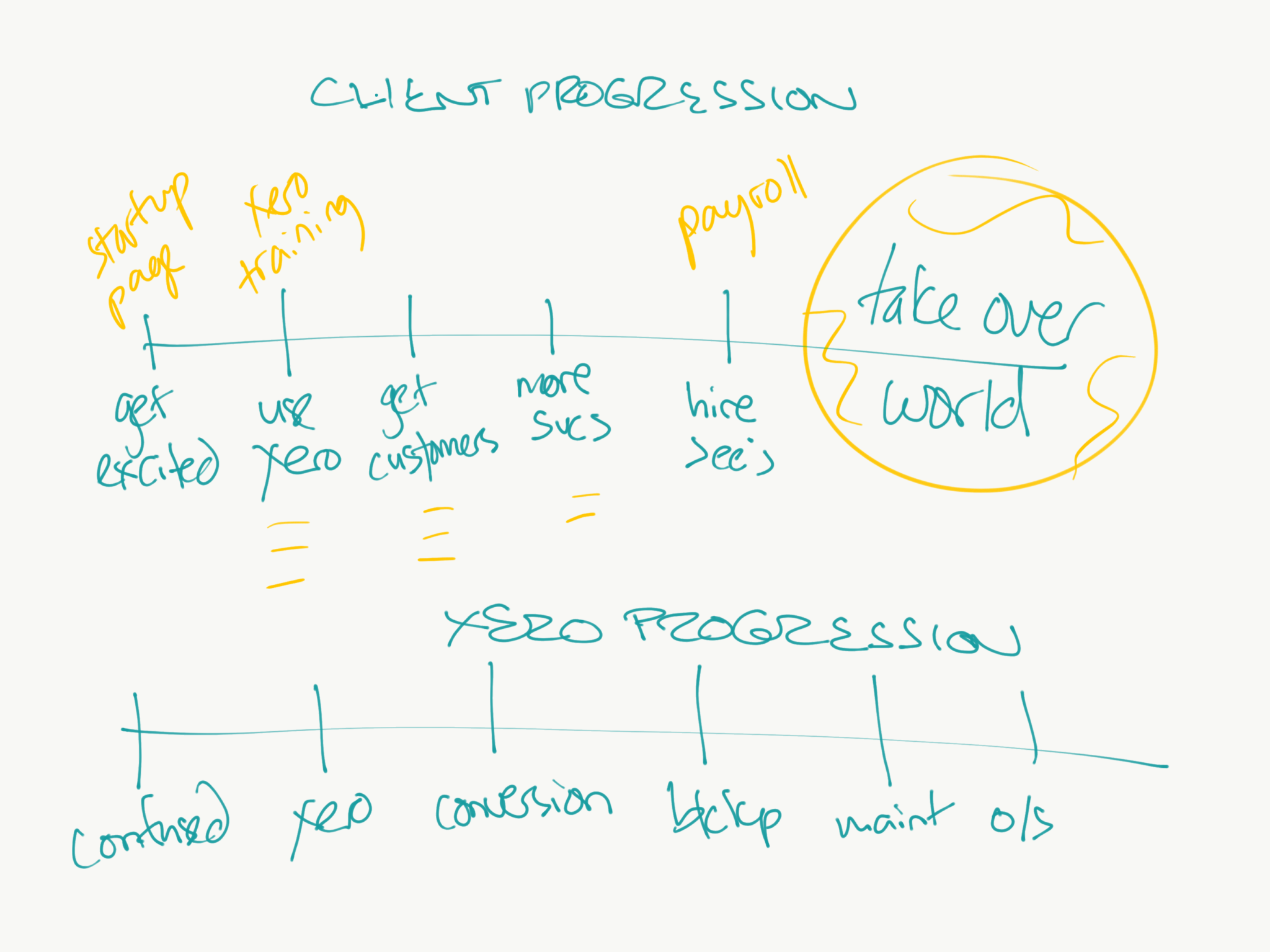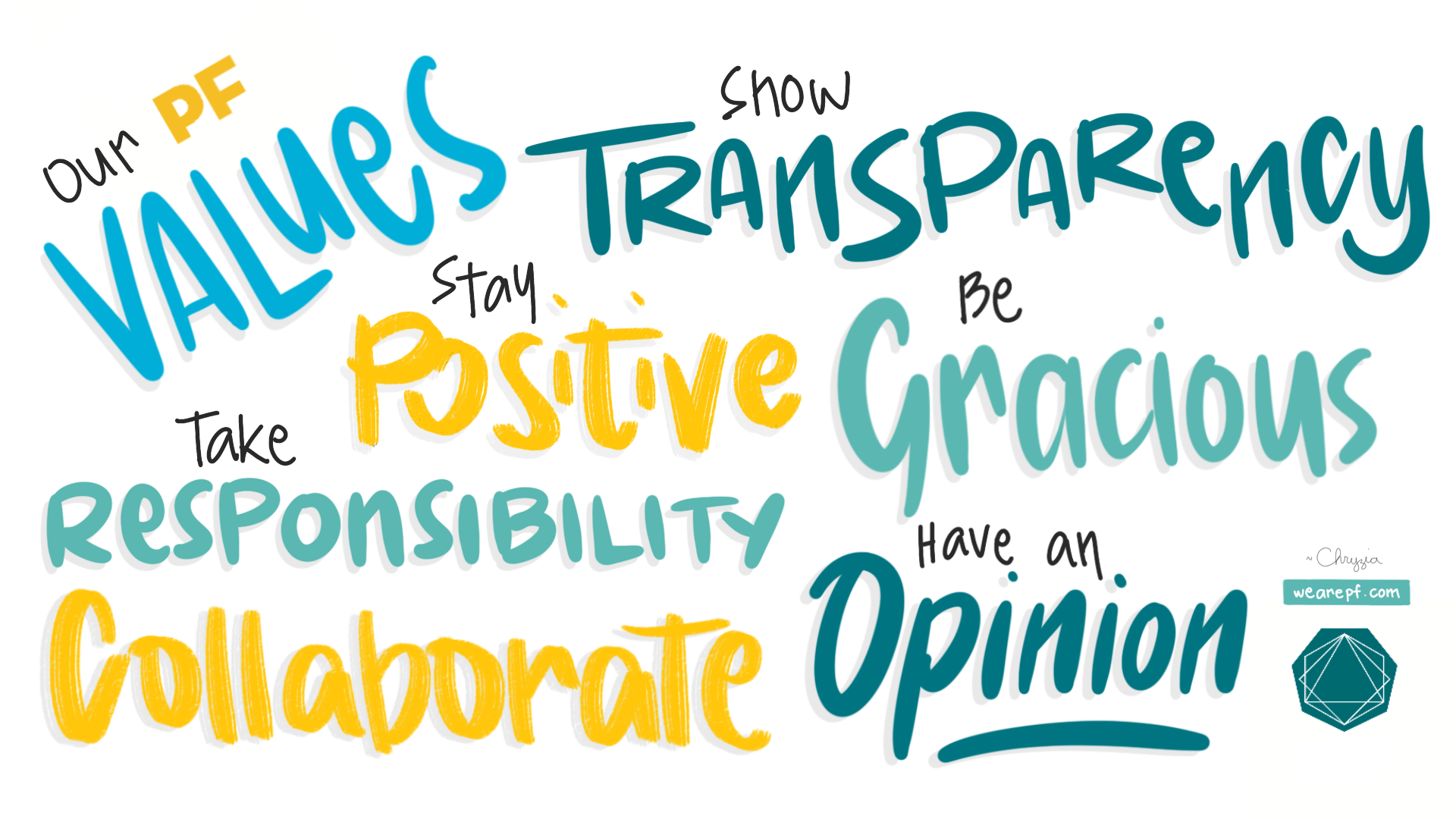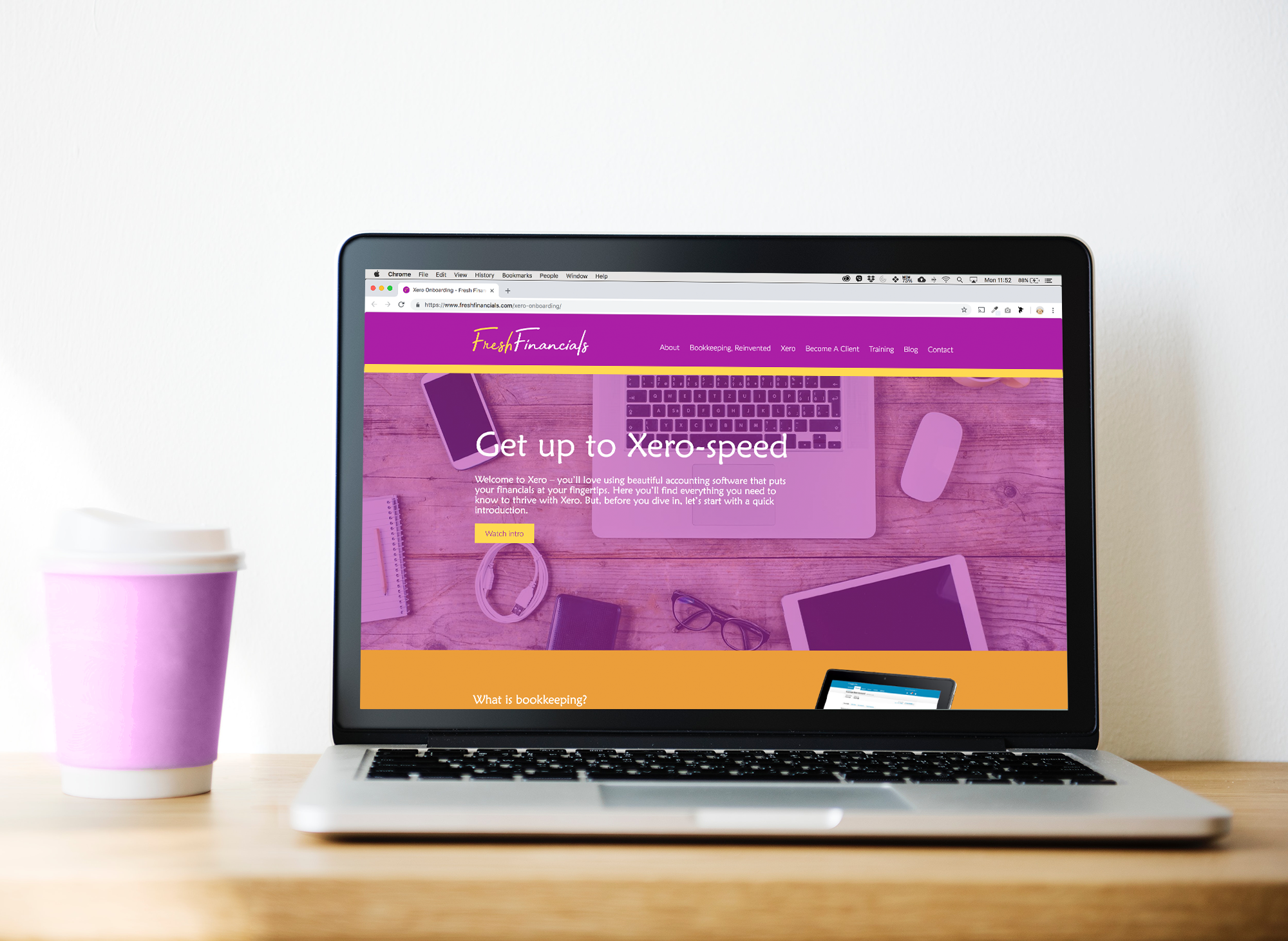So you’ve got an idea of your onboarding process and are excited to put it into action (if you don’t have one yet, check out our onboarding kit). Then you ask yourself, how do I get started? What pages and forms do I need? Will the process be manual or automated? The list goes on.
Your onboarding process is responsible for explaining what will happen in at least the first six months of your relationship with your client. It sets out a clear path for your client so they can better understand what’s going to happen and when. Most importantly, it holds you accountable to the promises you made during the sales process to make sure your clients have the experience they have signed up for.
I have the bones of an onboarding process in my head, but is it right?
You might have an idea in your head of what your onboarding process is. Or maybe you have had a couple of clients go through the process and you think you have a pretty good idea of the journey each client will follow. But this is not enough.
It’s not enough to just say “If you asked me, I could tell you what process you’ll follow.” Your onboarding process is an opportunity to build trust with clients and without it, this will be harder to do. Having a streamlined process also makes onboarding more efficient for both you and your client. This means more time can be spent actually serving your client and their needs.
Here’s how to get started:
- Pay close attention to the (specific) questions prospects regularly ask you. They could include, What do you need from me at this stage? Or when will I know how much tax I owe? How often will we meet? As you see common themes arising, you can address these ahead of time in your process and it will minimise the number of times you get asked the same question, saving you and your team minutes and hours of time (which add up!). It also will give encouragement to your new client as they realise your depth of experience.
- Ask your clients about their past experiences and fears when they were looking for a new accountant. What was their past experience with their former accountant? Why did they come to you? How did they feel when they decided to leave the other accountant, and how do they feel now? It may be their previous accountant was too traditional and they needed someone with greater digital experience. Or maybe they wished they had had more regular check ins. The reasons that the client came to you are valuable points to include in your process so other clients who feel the same way as they did, can easily see you understand their problems, and are ready to help them. And importantly, you know how to help them.
- Braindump your ideas. Whether it’s as a beautiful sketch or just a whole jumble of words, take everything from your brain and get it down on a piece of paper. Then you can start to group stages together and you will see a process forming. As an example, we helped Starfish Accounting roughly sketch out notes relating to their onboarding process and client journey during one of their Foundations Workshop sessions. Here’s one of the sketches we did – really messy, but helped us start to see where it was going.
- One size doesn’t fit all. If you’re a firm working with different sized businesses, or you offer a variety of services, then create an onboarding process for each of these. There may be some overlap between the different processes but it’s important each one is tailored to who it’s serving. Don’t be afraid to have as many as you need to make sure all sizes and/or services are covered. The best way to start is by creating an onboarding process covering the things which don’t change between type of client – ie every client needs to sign a proposal, sign terms & conditions, set up a payment authorisation, provide some financial numbers and information. Make a list of the things which are the same across the board, and start there. Test it and make sure it’s actually working in a simplified way. Then you can start branching off from your main onboarding process to add different paths for different types of clients.
Create a visual process for your onboarding to help clients understand it quickly.
Even with the best onboarding process with all the steps, your new client may feel overwhelmed at the sign up stage. They won’t be able to take on all the information about what’s going to happen in the first six to twelve months of working with you. Creating a visual to easily share your onboarding process gives clients something to refer back to and keeps them informed at what stage they’re at now, and what’s coming next.
At this stage, you’re taking your sketched and tested ideas and turning them into a visual which explains it simply – for you and for them. It needs to be done properly, by a graphic designer, who will take your sketches and ideas and turn them into something beautiful.
Your process doesn’t have to be overcomplicated, but it can be as detailed as you need it to be to make sure you are fully communicating your values and the process your clients will follow. Find out exactly what elements you can include in your onboarding process in this post, ‘The elements of a great onboarding process for your accounting firm’.
A great example of this in action is Raedan. During their Foundations workshop, Jonathan shared that they didn’t have any formalised process for onboarding. He also mentioned a few instances (more than he would like!) in which a new client, a month or three months or even six months into the relationship, would tell them about a new service they signed up for – with someone else. And Jonathan and the team would think, “Wait a minute – WE do that! Why didn’t they ask us?” We discussed it and realised together that it was overwhelming to give everything to a new client on day one. Or even in month one. And we sketched out what the most important things were for a new client, month by month, for six months.
They started by identifying a few key questions: How can we make the tasks easier? What can we automate? How can we have better checklists? What does the client MOST need at this point in the relationship? Raedan’s priority was to help their clients understand that although there is a lot to the onboarding process, they don’t need to worry as it’s all being taken care of step by step. The result was this simple yet effective graphic explaining to Raedan’s clients exactly what is going to happen in the first six months of working with them:
Since publishing their onboarding process and including it in their marketing, Raedan have received fewer questions about the process as they’ve been answered already through the graphic and accompanying collateral i.e videos. They’ve had great feedback that clients have found the process easy to follow and it made switching accountancy firms a lot easier for them. Even better, they’ve used the onboarding diagram to help explain to prospects what will happen when they sign up to Raedan as their new accountant, helping give the prospect confidence and causing them to sign up faster. Result!
What marketing can I craft for the onboarding process to show clients I understand their fears?
As soon as you’ve signed a new client, you’re excited to get started. Or, you’re tempted to just hand the client over to the team, trust it will all work out okay, and rush off to win another one. Remember to stop! Think about what they might be feeling. They’ve just made a big commitment and one likely to be the start of a long relationship. They might be feeling nervous about what’s to come and asking themselves questions like “Will the process REALLY be the same as what they’ve promised me?” This is particularly common for clients who have had a bad experience with a previous firm.
Focus on transparency from the very beginning. Make sure your client knows what they can expect from you and what will be expected from them. You’ll be starting the relationship based on trust and mutual respect and this will serve you for a long time to come. Ask your client if there are any areas they are feeling nervous about, or aren’t sure about. You’ve likely got software for managing their accounts so ask them if they are familiar with the tech, and if not, do they need a demonstration on how to use it. It’s important your client feels they are in a safe space with you and are able to share any concerns they have.
Here are some ideas of marketing material you can create and share for your onboarding process:
- Unique onboarding website page – this is to show exactly how the onboarding process works and gives you (and your client) a page to refer back to time and time again. It will also be useful at the qualifying stage when you are showing a prospect what it would look like to work with you, and then as a tool to refer back to you when they start the onboarding process. Make sure you have a video on this page, explaining your process and how all the stages work. (Video helps build trust faster, and provides a feeling of safety.)This is also the page to share the visual or diagram you’ve had designed.
- Fact finding form – this form gives you the opportunity to gather relevant information about your new client, typically the personal information you’ll require to be their accountant. Remember, it’s important to include why you are asking them for this information, and to keep this form secure.
- Thank you page/email – this can be an automated part of the process, sent once the client has completed the form (or at whichever stage suits your process). Thank them for signing up and tell them what is going to happen now. You could also include any helpful resources for them to review prior to moving forward. Include a video, again.
- Resources/training page – include videos on this page, explaining what resources will help which issues and taking them through any relevant training. For example, a video on how they can share their accounting software logins with you, or how they can review certain reports in Xero or Quickbooks. Start with one or two and add a video every time a new client asks a question. Soon you’ll have a whole library!
- FAQ’s section – Have these answered questions in an accessible format so your client can refer back to them as often as they need to. And keep adding to this section as your process develops. You can categorise your blog posts into topics such as “new client” or “onboarding”.
- Automated email sequence – this will send your client to website pages, to watch videos or complete any relevant training in the right order. It gives confidence from the word ‘Go’ that you are always there and in touch with them.
How to bring your onboarding into your qualifying process so you only onboard clients you want.
Now you’ve built an onboarding process and you’re all excited about helping new clients…it’s time to take a few steps back. Back to “making sure you bring on the right clients in the first place”!
Even before your client signs up, it is crucial they understand you and your firm’s values – and live up to them.
Your onboarding process is your opportunity to show your prospect you are committed to delivering what you have promised. No gimmicks. No disappointments. Just exactly what you told them they would get. It’s important to be as clear as possible not only in your actual process, but how you communicate it. Don’t just share with them what’s going to happen in the first month of working with you: you don’t want the client for just one month. You want to be their accountant for the next 20 years so they need to see you are committed to this relationship.
Your qualifying process is everything that happens (with a prospect) up until they sign up, and become a client. Although they won’t begin onboarding until after they’ve signed their proposal, we recommend sharing your onboarding journey at all stages of the qualifying process. It will be used as a visual tool when communicating with prospects. It will be clearly shown on your website and in your proposal pages. It will be shared on your social media and will almost certainly become one of your cornerstone pieces of content.
Be transparent about your process from the very beginning: it will help you to decide whether a client is the right fit for your firm. If your firm focuses on a particular niche, you would ask in your initial qualifying questionnaire whether the prospect operated in that niche. One of the changes we made to our qualifying process was to adapt our diagnostic form based on the type of accountant we’re best placed to serve.
You will be leading your client from the prospect process (qualifying) to the client process (onboarding) and there is the opportunity to build trust at both stages. At the qualifying stage, you are showing your prospect how you do things. When onboarding, once they’ve become a client, they will see that this is actually exactly how you do things. Make sure your prospects keep getting the great experience they’ve already had once they’ve transitioned to client status.
As well as the webpages you have created for your onboarding, you could also include:
- About us page/Values page – show your prospect who you are, who you serve and what your values are. This page is as much about them as it is you and you want prospects to quickly understand whether they’d be the right client for you. At PF, we have a dedicated values page so prospects can quickly see the values we live and work by.
- Process page – tell your prospect how you work; what they can expect from you and what you will expect from them. A great example of this is Robson Laidler‘s ‘How we work’ page which takes their prospects through the journey they can expect once they become a client.
How will my team be involved? What might I need to do to educate them on my process?
A key part of any onboarding process is making sure your team understands it themselves, and feels confident taking a client through it. Here are some ways you can make sure your team is educated and feel involved in the process:
- Team brainstorming sessions. Don’t just tell your team about the process. Involve them in the building of it. Team members who work with clients will have greater insights into the fears or worries your clients have and the journey they have been on before they come to you. This valuable input will help you shape your onboarding journey. Schedule a brainstorming session with the whole team and send out a few focused questions beforehand so they think about it ahead of the session. Give each team member the same amount of time to share their ideas (5-7 minutes). Take as many notes as possible (also record the call) and then piece together ideas from there.
- Training sessions (for both current and new team members). Your business is always changing and so it makes sense your onboarding process will be changing too. Record videos or conversations with clients as examples of how to take a client through the process. This can then become part of the training process for any new hires. Include current team members too – refresher sessions help build confidence and ensure all team members are communicating the same message. If your team doesn’t feel confident with the process, they won’t effectively communicate it to the client and this could lead to confusion and frustration on both sides.
- Ask for feedback from your team. Gaps will begin to form if there is a disconnect between your onboarding and the actual process clients are following. It may be you’ve added a new service or invested in new technology and the process which clients previously followed has changed slightly as a result. Your client facing team is going to be the one who picks up on these changes so make sure you continuously ask them for feedback. Create a thread in Slack dedicated to onboarding process queries, or create a Gsheet and circulate. Encourage your team to add any feedback here and set a reminder in your diary to review it every month. If the same queries/comments are being brought up multiple times, then it’s time to review your process and decide if any changes need to be made.
How do I help people to understand my onboarding process?
There is little point in having an award winning onboarding process if no-one can make any sense of it. You might see another firm’s process and think “that’s exactly how mine could be” but it’s not actually a fit at all with your brand, services or values as it’s been built for them and not you.
In order to help people understand your process, consider these things:
- Does the process actually reflect my brand and values? If a client was to see your onboarding process independently, you want them to immediately recognise it belongs to your firm. They will know this from the branding (not limited to logo, but also colours and style) and from the process itself as it will be a true reflection of how you operate as a firm. GoProposal’s onboarding process collateral not only includes their brand and style, but also reflects exactly how they work with their clients throughout the onboarding stages and beyond.
- Is it truthful? There are firms who overpromise and underdeliver. This leaves clients disappointed and frustrated, and if that happens (even unintentionally), it will be very damaging for your brand. Make sure the process actually reflects what’s going to happen, and don’t put aspirational actions in there. Include exactly what will happen, and nothing else, until any new actions are confirmed. Fresh Financials have a dedicated Xero-onboarding page which includes helpful training videos and feature lists so clients can see straight up what’s going to be involved.
- Is it clear enough? Although we encourage you to create a visual representation of the onboarding process, make sure the content doesn’t get lost in the design. It’s all very well for your process to look pretty, but serves little purpose if you aren’t effectively communicating the process and deliverables at each stage. If you make the process too complicated, you also risk alienating prospects and clients and they will feel overwhelmed, fearful and likely back off. Make it very clear this is a simple process, and although there may be a lot to it, you will be there guiding them all the way through. (Try explaining it to your 7 or 9 year old, if you have one! If they don’t get it quickly, make it simpler.)
- What’s the background to your process? Include an explanation at each stage as to why this is what you do. Why are you asking them to fill out a questionnaire? Because you want to understand more about them as an individual. Why do they need to send their last three financial statements? Because you need to see what shape their financials are in the moment. Why do you send monthly reports and not weekly? Because most clients need at least monthly check ins, but they can review their own numbers in the accounting software daily or weekly. MAP includes videos throughout their onboarding process explaining what each stage involves, why they are asking for the information they are, and what’s going to happen next.
- How do I make sure people watch the video I send with it? We encourage you to send a Loom video when sharing your process with a prospect or client. Helpfully, Loom shows you how many views you have on the video so you will be able to see if they have watched it. Also, make it clear there is more detailed information in the video, and that’s where they’ll find answers to lots of their (likely) questions. Keep the video short and personal – make sure you get across the key points you want to communicate but don’t overwhelm them with non-relevant information.
What do I do if clients aren’t following the process?
Ideally, you’ve been so clear and transparent from the beginning there is little room for any confusion on your client’s side. But we are all only human so it’s important to have a process for how to deal with these situations. Plus, any feedback from clients is a learning tool to further develop your onboarding process.
When your client first signs up, they are feeling excited. Excited about this new journey they are about to embark on with the accountant they will hopefully have for the next 20 years. They’ve got their onboarding journey laid out in front of them and they are ready to go. But now it’s month three and they haven’t been sent their report they were promised. But it transpires that’s because they didn’t send the financial statement they were supposed to in month two. So now they are frustrated that their report is coming later than was expected. You need to address this head on. Take responsibility for anything on your side, for example, by creating deadlines in Teamwork or Basecamp for your team so they can follow up with clients on anything that hasn’t been sent. Then explain to the client the “process works this way… and it will help you in this way… and the consequences of you not doing it are… so you need to do x action by x date and here’s how we’re going to help you do that.” Ask them encouraging questions, like: What part of the process are you finding difficult to follow? Do you understand why we are asking you for this information? But remember, always address it with authority, and remind the client they have to follow the process or else things won’t work and they will end up frustrated.
Your onboarding process has to change as your business changes.
Your business is always changing. Your website is always changing. So naturally, your onboarding process will change too. Don’t be afraid to make changes to your process as your business evolves. You may have expanded to another industry, or increased your service offering, which needs to be reflected in your onboarding process. Technology is constantly evolving and so the processes for systems will always be changing too. This is perfectly normal and we encourage you to change the process in time with your firm changing.
You may also refine your process based on client feedback. Maybe one of your steps is confusing, or not required at all. Or maybe you discover after several clients have been through the process you are missing something you consider important enough to be in there. Maybe you are using a piece of software, for example for bookkeeping services, which you didn’t think needed to be included, but in fact you’ve had lots of questions on how to use it from clients. With your onboarding, resources and training webpages, and your automated email system, you can make small, reactive changes when required. Ask your clients how they are finding the process and encourage them to share any feelings they have about it. This way you can find out what’s working, and what maybe isn’t working, and continually refine the process.
This is all ok too. No existing client is going to hold it against you if you make improvements to a process they have already been through. Especially when it includes taking on their feedback and making the process smoother for other clients.
So start thinking about how you can document your onboarding process, and show your clients (and soon-to-be clients) the journey they’ll take with you. Make sure it shows your values and explains your actual process. Involve your whole team in the creation of it and encourage regular feedback from clients. And then get sharing – create dedicated webpages, build automated email campaigns, include the process in your proposals. Videos, videos and yet more videos! Show your clients the great experience they will have with you! Follow in the footsteps of Starfish Accounting and Raedan, and create your onboarding process in a Foundations Workshop today.







